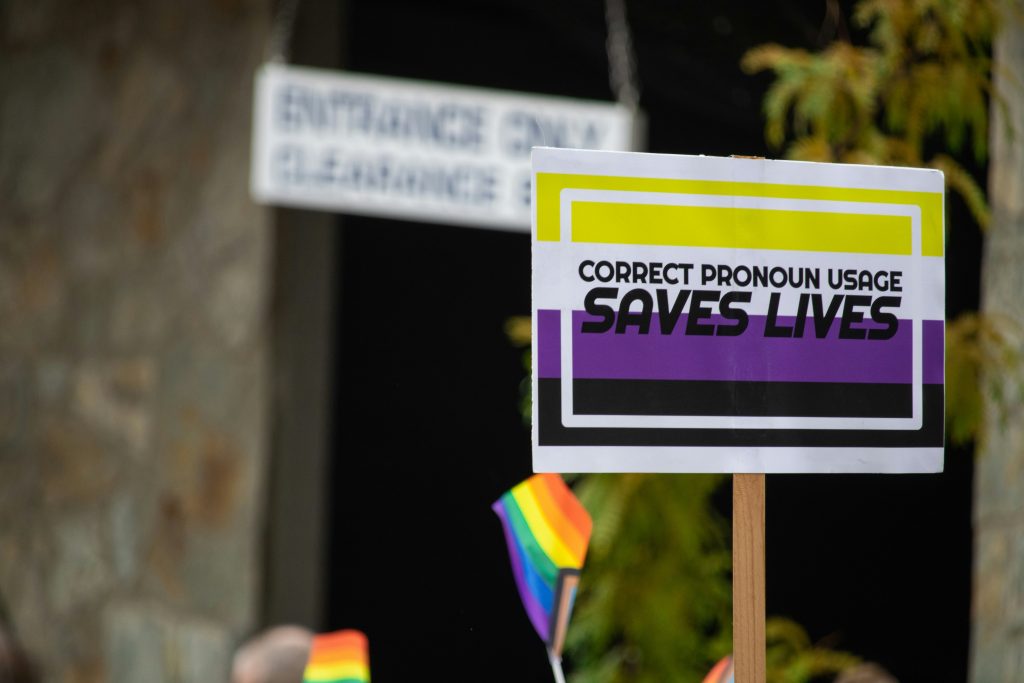I was a first-year college student studying Gender Economics, and I came across the concept of gender-inclusive pronouns. Like every other student in my class, I was fascinated and frankly surprised when our teacher told us that there are at least 10 different types of gender that people identify themselves with across the globe. I learned that some individuals identified with the gender they were assigned at birth (cisgender), whereas some did not (non-binary gender). Some fall in the spectrum of male and female extremes (gender fluid), while some identify with all genders (pangender).
While I could recognise these novelties and understand how they played out in theory, it was new. I wondered, “What if I interact with people who identify themselves with non-binary pronouns, and I end up making a mistake? Should I ask them what pronouns they prefer, or would it be rude and outright to do that? Would they get offended?”
Later that year, I started bingeing a Netflix Show titled “Sex Education.” It began as a typical teenage drama portraying the thrills of adolescence. Still, as I continued to watch the show, I was amazed to see how the show uses a multi-spectral range of diverse demographics, to subtly represent the intersectionality of race, gender, and the LGBTQIA+ community. This is not the first time some of these elements have been portrayed in the media. But from applying gender-inclusive pronouns to delineating non-binary individuals, the writers of Sex Education ensured that these elements were normalised and used exactly as they were supposed to be used.
Gender pronouns refer to a person after using their name. They are frequently used to denote the individual’s gender identity. For instance, gendered pronouns like she and he implies that the speaker is either a man or a woman. However, not everyone identifies as a man or a woman, and some people might choose to use gender-inclusive or gender-neutral pronouns rather than gender-specific ones. These pronouns include they, them, their, and others, such as zie, zim, and zir.
Gender pronouns are important because they are a way of respecting and affirming someone’s identity and expression. Using the correct pronouns for someone is equivalent to saying their name correctly. It conveys respect and acceptance. On the other hand, using the wrong pronouns or declining to use someone’s preferred pronouns can be aggravating and disrespectful.
Some people may prefer that others address them using specific pronouns. These are called personal gender pronouns (or PGPs). For instance, someone might say, “Hello, my name is Rahul, and I use they/them pronouns.” This implies that they/them should be used, rather than he/him or she/her, to refer to Rahul. Some people may also use different pronouns in different settings or at other points, depending on their feelings or who they are with.
Assuming non-binary gender pronouns also challenges the binary assumption that everyone is either male or female. While the concepts around pronouns have been structured for understanding, the application still needs attention. Here are a few simple ways to understand the fundamental application of gender-inclusive pronouns:
- Learn about the different types of pronouns and how they are used in sentences
- Never assume a person’s pronouns, or refer to pronouns as masculine or feminine
- Ask people what pronouns they use and respect their choices
- It is best to apologise and correct oneself without making a big deal if one makes a mistake
By using gender pronouns appropriately, one can create a more inclusive and supportive environment for everyone.
Now that I have finished graduation and become a working professional, in my next article, I will bring in some application-based writing on how to use these pronouns and talk about subtle ways to address such situations in the workplace.
References
Gender & Pronouns | Harvard University Office for Equity, Diversity, Inclusion, and Belonging
Gender Pronouns | LGBTQ+ Resource Center (uwm.edu)
A Guide to Understanding Gender Identity and Pronouns: NPR
Understanding Gender Pronouns – LGBTQ Center (vassar.edu)
Sex Education – Representation | Hollywood Insider
Gender Pronouns | Springfield College


